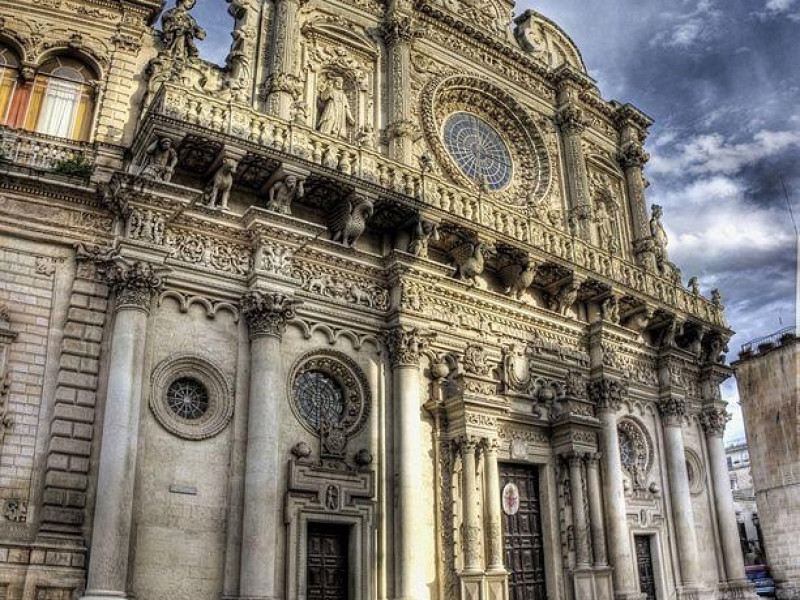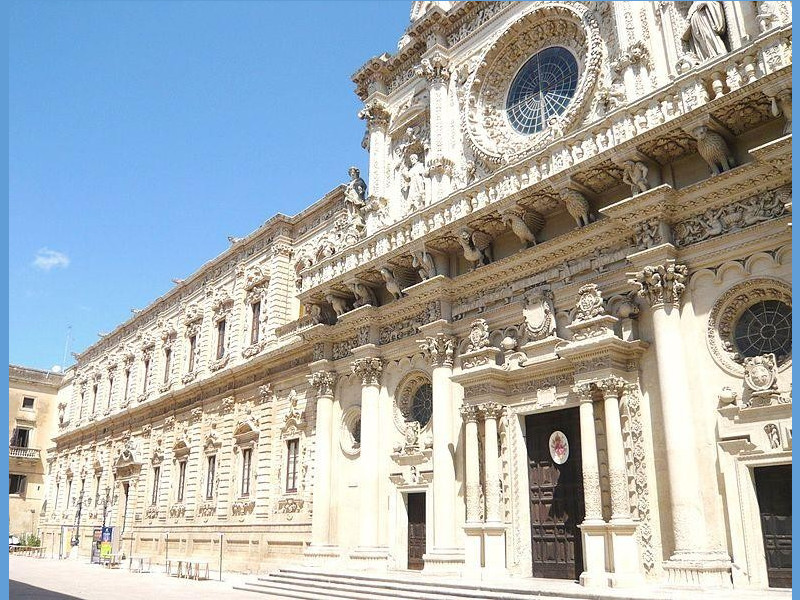Basilica di Santa Croce
The Basilica of St. Croce together to the former Celestine convent is the highest manifestation of Baroque art. The facade is composed of six columns to smooth shafts that support the entablature and subdivide the property into five areas. The portal, built in 1606, has pairs of Corinthian columns and exhibits signs of Philip III of Spain, Mary of Enghien and Gualtieri VI of Brienne. On the side of the doors are exposed crests of Puglia and the Congregation of the Celestine. The entablature is surmounted by a succession of telamons depicting grotesque or fantastic animals and floats that support the balustrade, adorned with putti thirteen embraced the symbols of temporal power (the crown) and spiritual (tiara).The second order of the facade is dominated from the large central rose-inspired Romanesque. Profiled by laurel leaves and berries has three orders in low relief. The rose is well illustrated by two Corinthian columns, which separate the central area from the side where the niches with statues of St. Benedict and Pope Celestine V looking at the rose window, to his left (exactly at nine o'clock), we note the self-portrait of Antonio Zimbalo. At the extremes, to close the profile of the second order, stand two large statues of women, symbolizing the Faith and Fortitude. The tympanum, with the triumph of the cross in the center, closes above the facade. According to Maurizio Calvesi and Mario Manieri Elia the complex decorative program of the facade should be connected to a celebration of the victory in the Battle of Lepanto (1571) in which the Western powers had prevailed on the Ottoman Empire, with major commercial benefits for the Terra d 'Otranto. The telamons clothes Turks would allude to the prisoners captured by the Venetian fleet during the battle: the division of the spoils captured from the enemy during the battle of Lepanto took place in fact in Terra d'Otranto, near the shrine of St. Mary of Leuca. The animals depicted under the balustrade could instead allude to the Christian powers allies: the dragon was the emblem of Buoncompagni, the family to which he belonged Pope Gregory XIII, the griffin symbolize Genoa, the Hercules Grand Duke of Tuscany, etc. The interior has a Latin cross, was originally divided into five naves, two of which were later absorbed in the side chapels added in the eighteenth century.
(Wikipedia)



